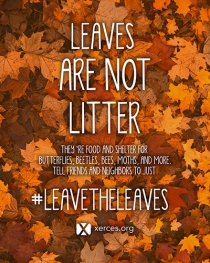
An elderly farmer once told me, "In 90 years of living, I've learned one thing. Change is the only constant." The fall of 2017 would make him smile. Everywhere I look, people are exploring new ideas in land care--and some of them are as old as the hills. If even some of these trends take hold, our individual and commercial landscapes will be notably different in the near future.
For instance, the Xerces Society for Invertebrate Conservation, a leading player in the campaign to promote pollinator habitats, is running a national campaign asking us to do what used to be considered unthinkable--leave our leaves! If that headline raises a lot of questions and issues for you, see their article. Will people adopt this practice? (I have been using chopped leaves as mulch for at least ten years, but the Xerces Society is even asking us to avoid the mulching mower.)
Recently, I read an article in Kiplinger’s, a personal finance magazine and website, that predicts the disappearance of plowing. Many farmers have migrated to no-till and low-till practices, which aim to conserve soil structure and nutrients.
And everywhere I look, I see "rain-scaping," -- ways of managing stormwater so that it stays on site and doesn't pickup pollution as it runs off hard surfaces. From pervious and permeable pavements to bioswales and raingardens and living green roofs, rain-scaping is one of the new norms.
Want to know more? In this week's article, I offer seven new tips on fall land care and highlight the latest trends. View the full article and photos on Zip06/TheDay.
If you have trouble with the link, download the text of the article below.
And yes, some of these changes are causing local blow-ups over nature vs. neat-and-tidy. (See my recent article, "When Wildness Meets Main Street." )
| Attachment | Size |
|---|---|
| 917.14 KB |
